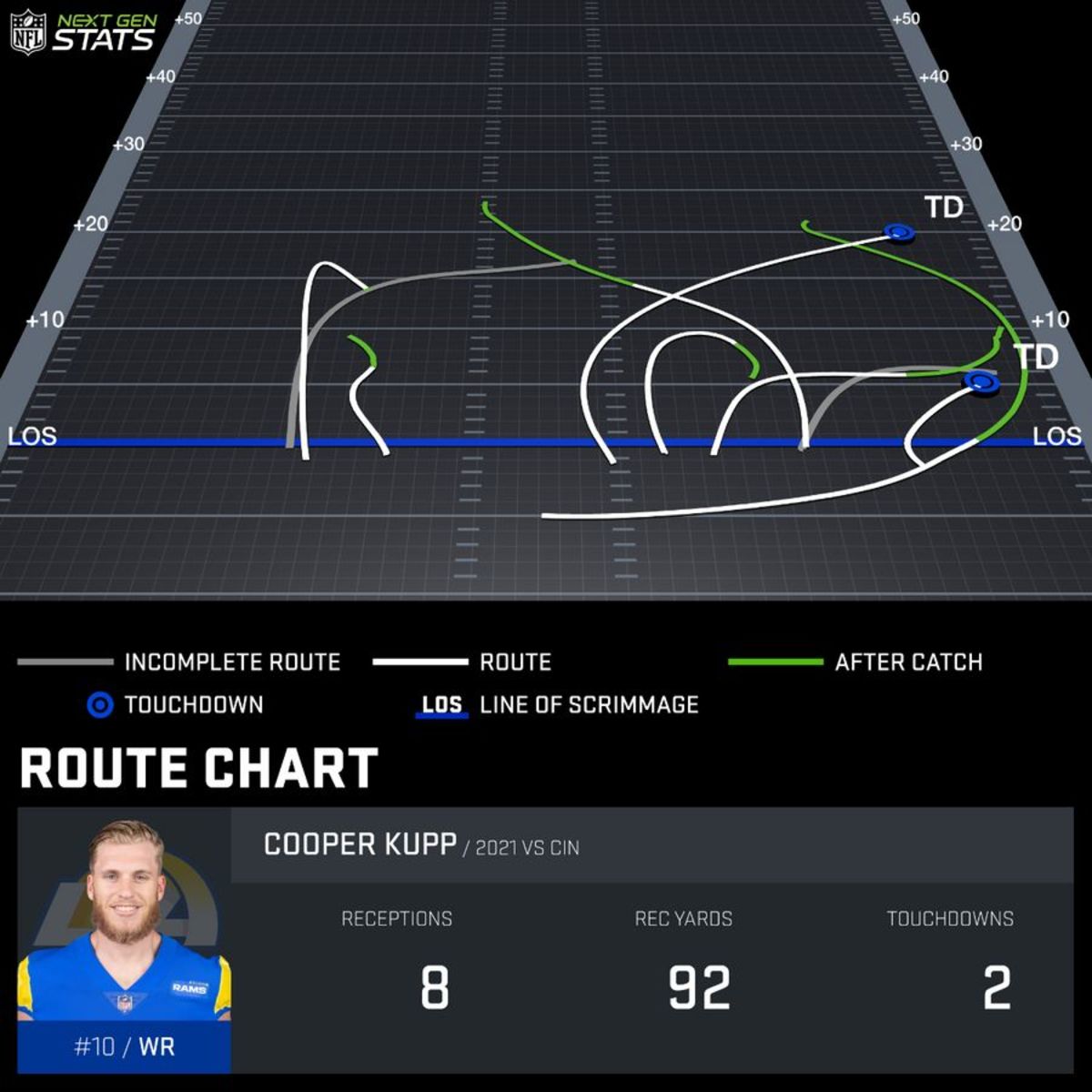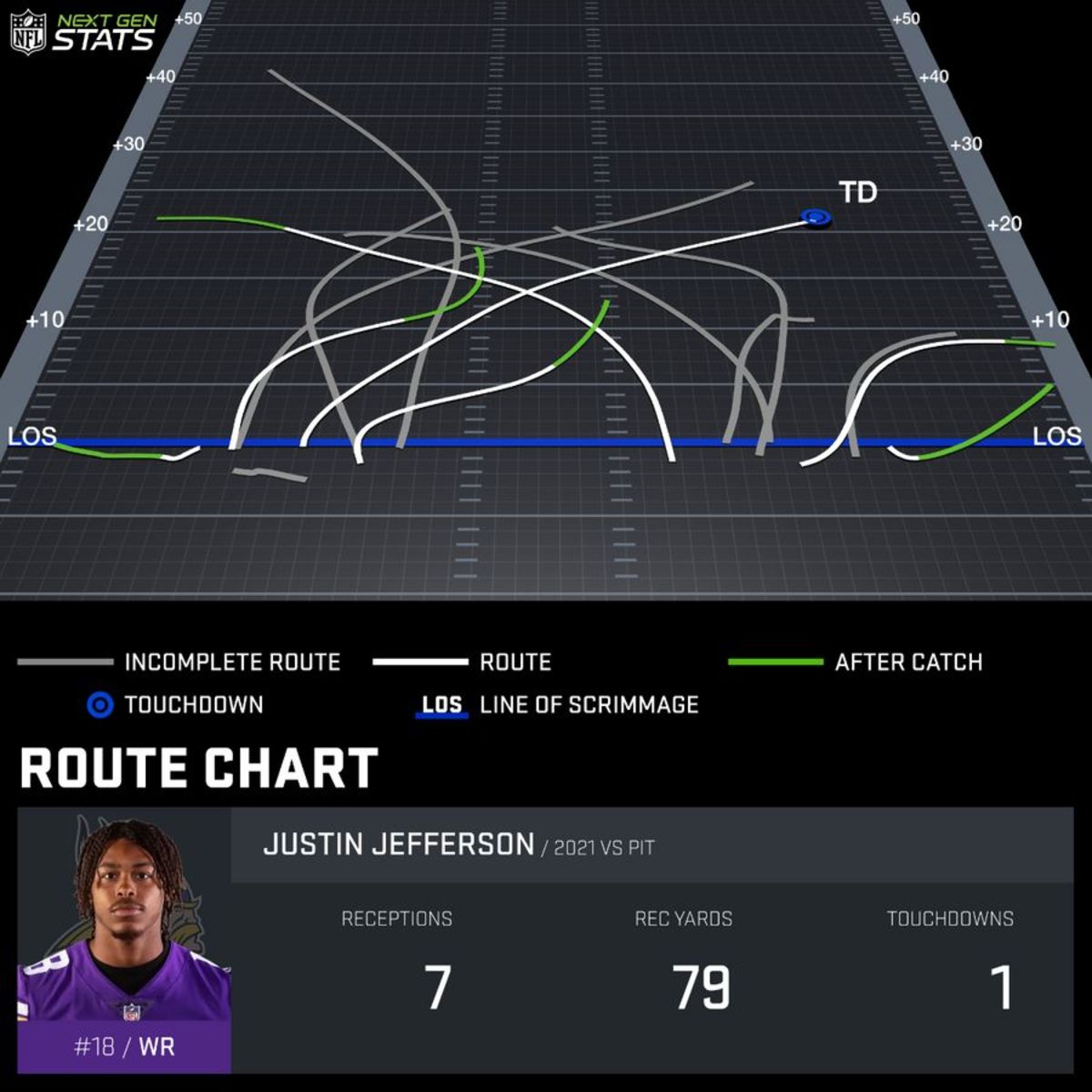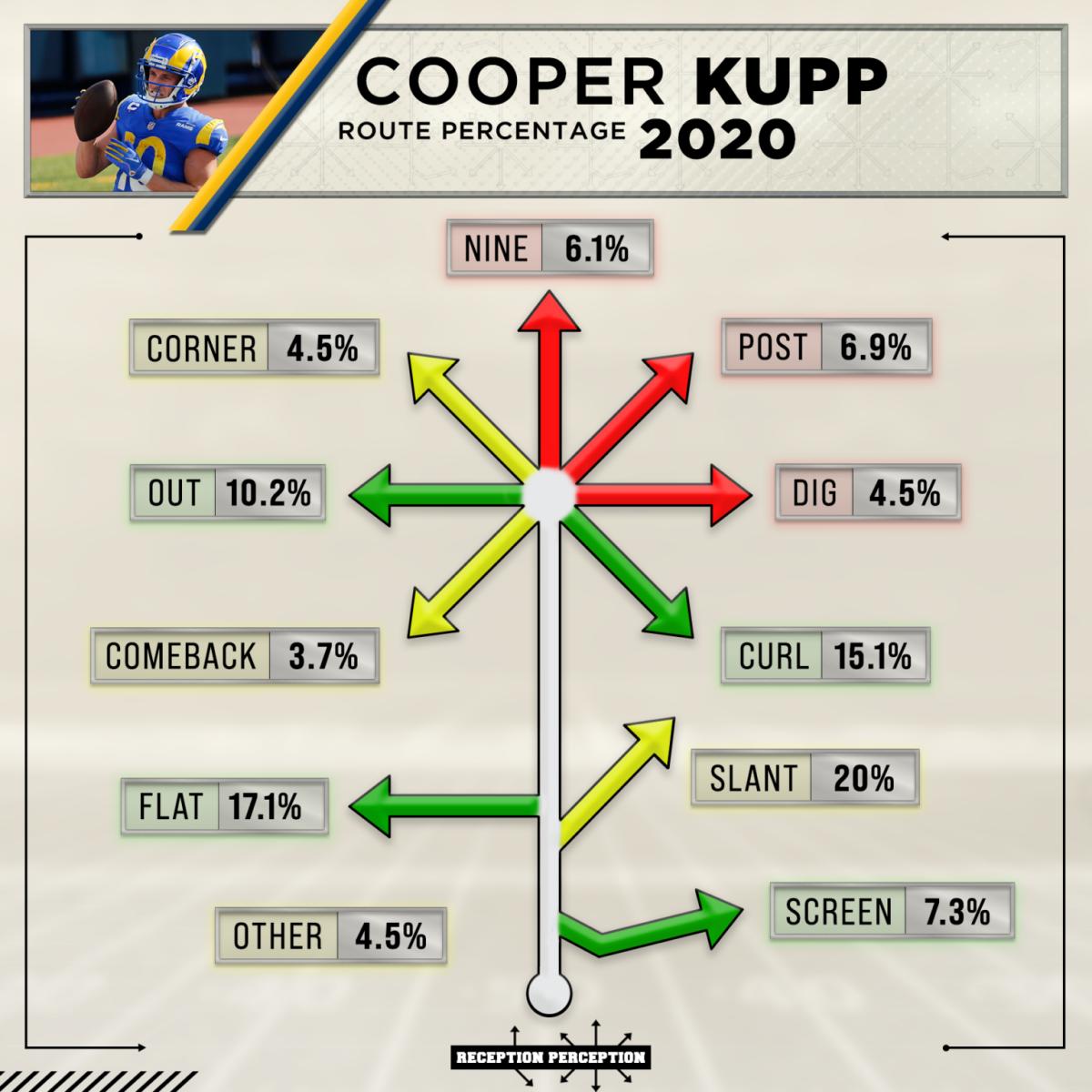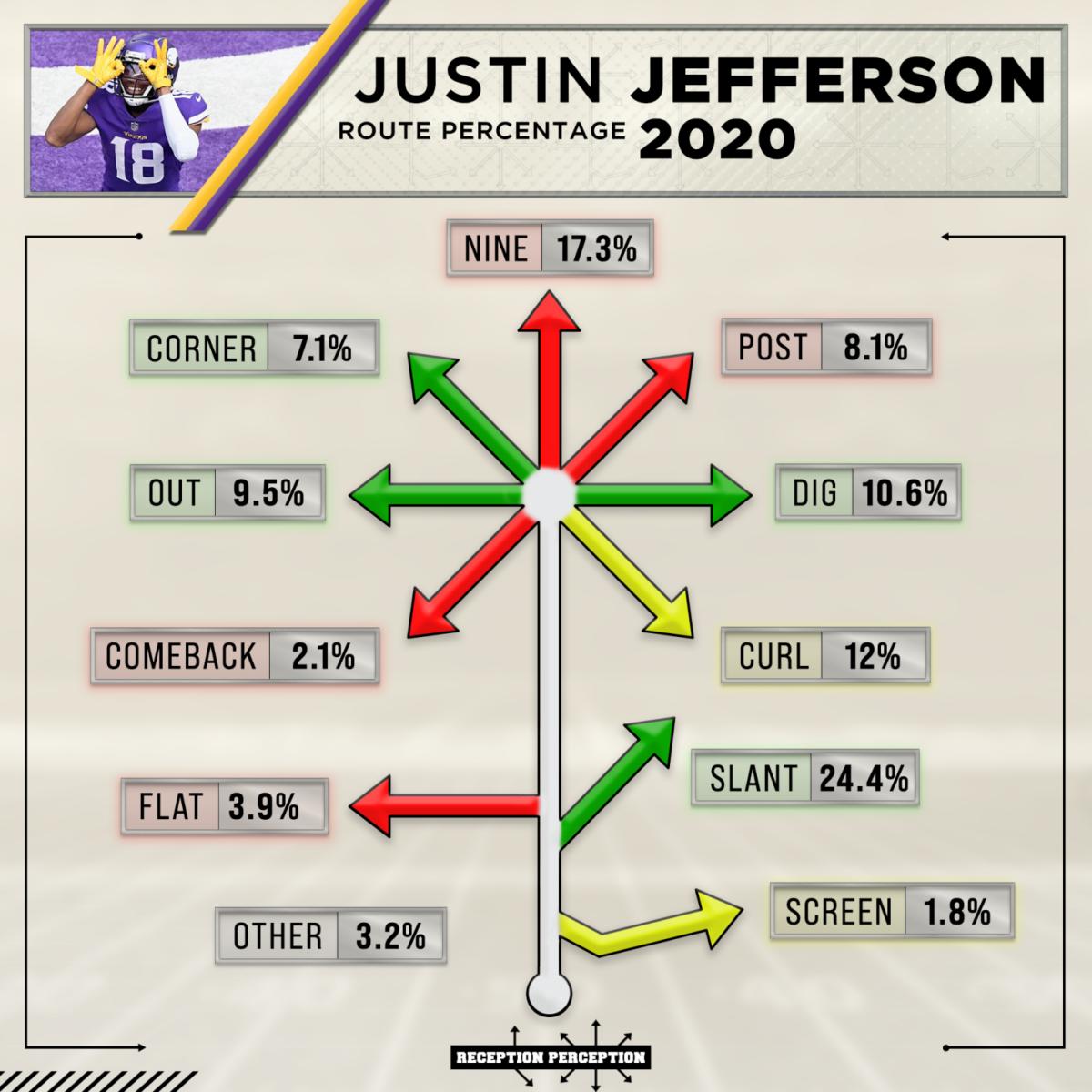Should the Vikings use Justin Jefferson like Cooper Kupp?

EAGAN — When Kevin O’Connell was hired by the Minnesota Vikings, Justin Jefferson was at the Pro Bowl. The first thing he said about the new coach: That O’Connell’s former team the Los Angeles Rams sure know how to use their No. 1 receiver.
It hasn’t always been the smoothest ride with top receivers’ usage in recent years, after all.
When Jefferson spoke with Twin Cities reporters for the first time this offseason, he didn’t shy away from comparisons to Rams superstar Cooper Kupp.
“Seeing what Cooper Kupp did last year, him getting close to the record, him being so open so many times, there’s a lot of things on film that I watched and looked at and I’m excited about this year,” Jefferson said.
In an appearance on Pro Football Talk last week, O’Connell leaned into it.
“The one thing about Cooper Kupp this past season is he lined up in a lot of different spots,” O’Connell said. “It was hard for defenses to really know where he was. He did a lot of different things. He had an impact in a lot of phases of our offense beyond just catching a lot of balls and scoring a lot of touchdowns. There was a huge role for Cooper because of his willingness to be completely solidified in every phase, both the run and the pass.”
“I see that with Justin. I see an incredible, incredible skillset, but I also see a player we can move around. We can make it hard for defenses to know where he’s going to be. He doesn’t have to line up in the same spot all the time. He doesn’t have to run the same type of routes all the time.”
So how much different will Jefferson’s role look this year if he’s used more like Kupp? How much different should it be, considering Jefferson has already had incredible success to start his career? In order to figure that out, we need to compare how they were deployed.
The major contrasts reside in how often Kupp lined up in the slot and his average depth of target. L.A.’s superstar ran 65.5% of his routes out of the slot, while Jefferson was only moved inside 31.0% of the time. Naturally, Jefferson saw a higher percentage of intermediate and deep passes. The average Jefferson target traveled 13.6 yards through the air, while throws in Kupp’s direction went only 8.6 yards from scrimmage. Out of the top 30 most targeted receivers in the NFL, Jefferson ranked seventh highest, while Kupp was 28th in depth of target.*
*(All data via Pro Football Focus unless indicated otherwise)
It should come as no surprise that Jefferson had the most deep targets of 20-plus yards through the air (39), while Kupp had 23 out of 191 targets.
The Vikings would be unwise to reduce Jefferson’s intermediate and deep targets by much. Last year when throwing the ball more than 10 yards through the air toward Jefferson, Kirk Cousins completed 57 of 100 passes for 1,249 yards (12.5 YPA) and threw eight touchdowns, two interceptions, good for a 119.9 quarterback rating.
Kupp only saw 67 such throws, but was highly effective, catching more than 65% of passes thrown over 10 yards. You could either surmise that the Rams should have thrown deep to Kupp more often or that they only went downfield to him when he was wide open. The numbers hint somewhat toward the latter, with Jefferson facing 20 contested throws beyond 10 yards, while Kupp only fought for the ball 10 times.
Neither player was used regularly in the screen game but Kupp was way more efficient, gaining 8.9 yards per attempt on 21 screens versus 5.8 YPA for Jefferson on 16 screens.
The rubber hits the road on the short passing game, where Kupp got 95 targets and Jefferson saw just 42 quick throws. They averaged nearly an identical yards per attempt (8.3 vs. 8.2).
You can see from this NFL NextGen tracking the differences in the types of routes. Below is Kupp’s routes on targets in the Super Bowl:

Now compare that to Jefferson this year against the Pittsburgh Steelers:

Jefferson ran numerous deep crossers and a deep corner with a handful of quick routes mixed in, while almost all of Kupp’s targets came on quick outs and slants.
Data collected by Yahoo! Sports’ Matt Harmon at his site Reception Perception from 2020 shows how often the Rams leaned on slants, flats, curls and out routes.

In Jefferson’s rookie year, he ran a high percentage of slants but far more nine or “go” routes than Kupp and almost never ran flat routes, which were a staple of Kupp’s route tree.

Jefferson clearly ran all types of routes and, per PFF, he equally split his slot and outside reps between the left and right sides.
What about motion? A key part of the Rams’ offense under Sean McVay is moving receivers around pre-snap. Per ESPN, the Rams were fifth in most pre-snap motion and the Vikings were 16th. The difference between Kupp and Jefferson’s motion usage isn’t as much as you might think. Per PFF, Kupp went in motion 118 times and Jefferson 88 times.
Vikings offensive coordinator Wes Phillips explained last week that motion is about “the ability to be able to move those guys when you want to and get them in the spots where they can be most effective is huge.” He used an example of Kupp being motioned to the linebacker side when the opposing defense is playing zone coverage.
“If they’re going to line up if they’re in nickel defense…they have an extra DB, they’re going to line that nickel to the passing strength more often than not,” Phillips said. “And the last drive in the Super Bowl, if you watch, we had several plays where Cooper was aligned over to the tight end side away from the passing strength, so if you’re in a zone defense, then you’ve got the linebacker.”
Overall, Kupp wasn’t much more open than Jefferson overall, according to NextGen data. The average separation when catching the ball for Kupp was 3.6 yards and 3.0 yards for Jefferson. According to PFF, they faced very similar percentages of man coverage (25% for Kupp, 30% for Jefferson) and ranked No. 1 and No. 2 by PFF grade versus man.
“They’re different players, but I think they’re both very instinctive and both have a natural ability to separate,” Phillips said.
Kupp and Jefferson have separated themselves as two of the best wide receivers in the NFL. Jefferson is unlikely to struggle with any adjustments to his role and could be more of the centerpiece of the Vikings’ offense if he’s given more throws between 0-10 yards through the air like Kupp. More slot snaps is likely to make that possible.
However, O’Connell shouldn’t throw out all the Kubiak influence in Jefferson’s game. After all, he is an elite deep receiver, came within one pass of setting the Vikings’ receiving yards record, ranked No. 3 in the NFL by PFF grade, had the 15th best yards per catch and scored the sixth most touchdowns last year.
